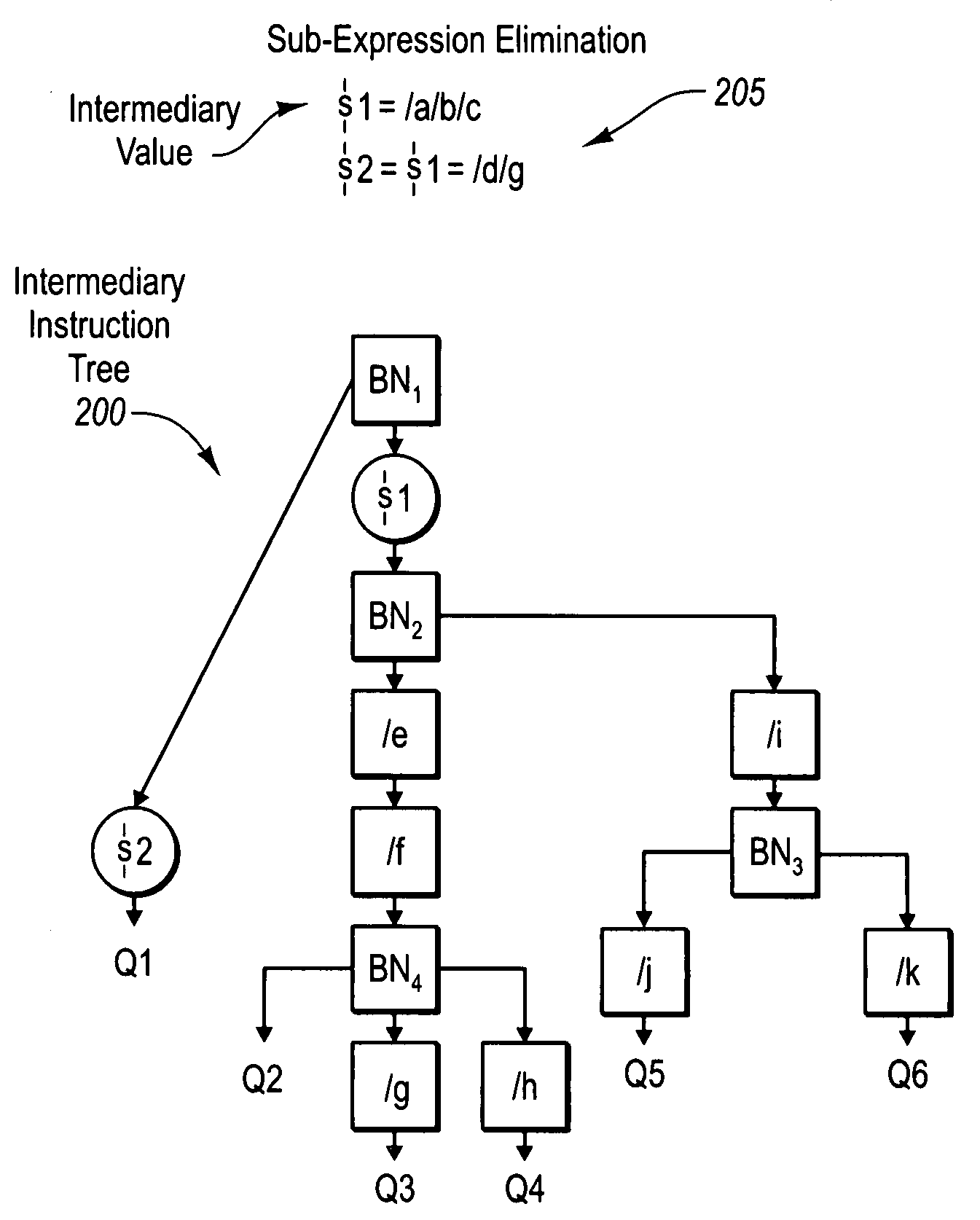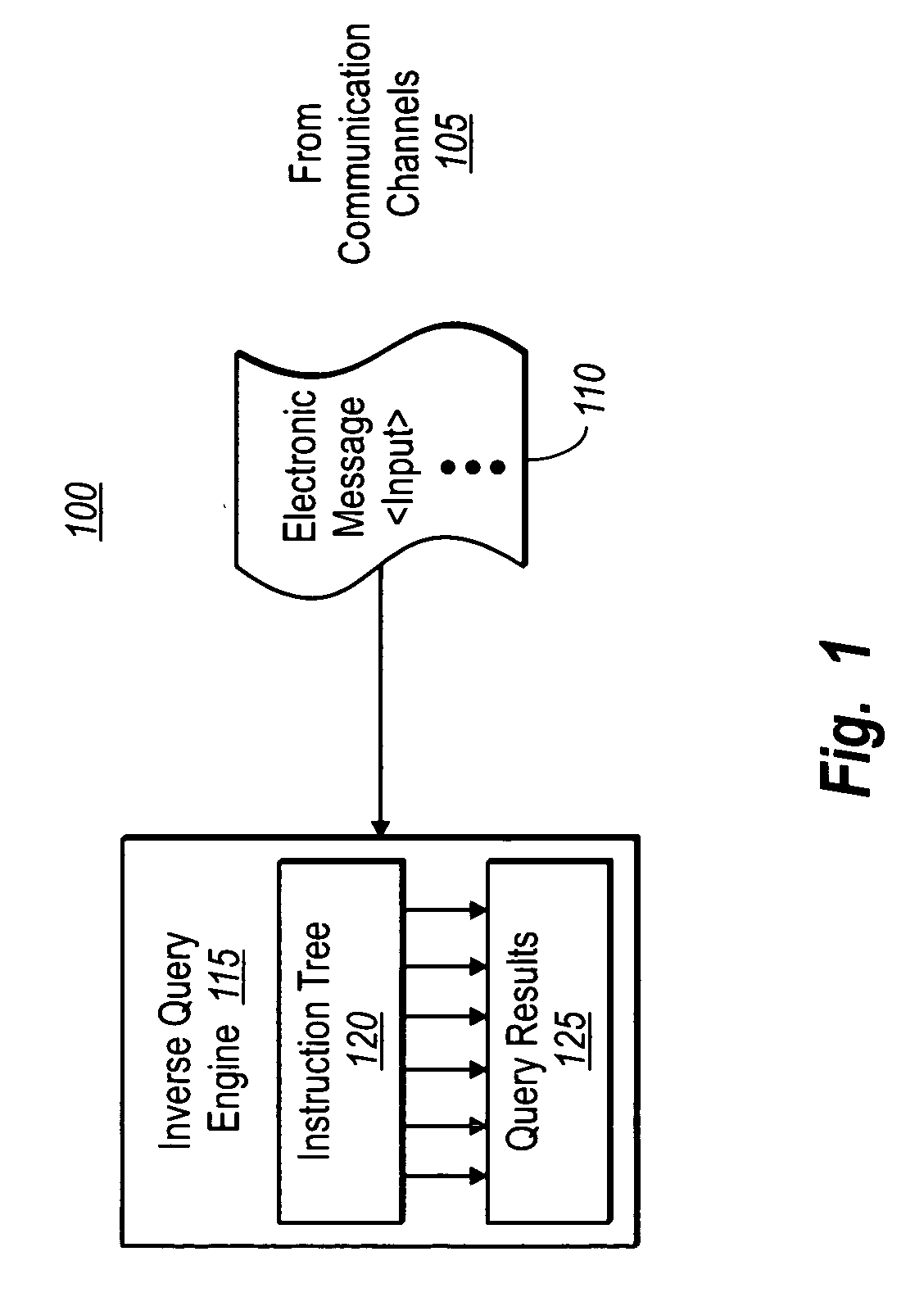Common sub-expression elimination for inverse query evaluation
a technology of inverse query and elimination, applied in the field of common subexpression elimination for inverse query evaluation, can solve the problems of unneeded extra work, high cost of processing input against hundreds or thousands of queries, etc., and achieve the effect of efficiently evaluating a message and avoiding redundant work
- Summary
- Abstract
- Description
- Claims
- Application Information
AI Technical Summary
Benefits of technology
Problems solved by technology
Method used
Image
Examples
Embodiment Construction
[0020] The present invention extends to methods, systems, and computer program products for efficiently performing sub-expression elimination by merging identifying redundant portions of query expressions regardless of where they occur in their compiled forms within an instruction tree. The embodiments of the present invention may comprise a special purpose or general-purpose computer including various computer hardware, as discussed in greater detail below.
[0021] Example embodiments allow for eliminating redundant work for query expressions that have commonality among their sub-paths by using common sub-expressions elimination techniques described herein. When the expressions are in their compiled form, the expressions can be iterated over in order to determine idempotent fragments, which will return the same result given the same input regardless of where they occur in compiled form within an instruction tree. Examples of such idempotent fragments include absolute paths (i.e., pa...
PUM
 Login to View More
Login to View More Abstract
Description
Claims
Application Information
 Login to View More
Login to View More - R&D
- Intellectual Property
- Life Sciences
- Materials
- Tech Scout
- Unparalleled Data Quality
- Higher Quality Content
- 60% Fewer Hallucinations
Browse by: Latest US Patents, China's latest patents, Technical Efficacy Thesaurus, Application Domain, Technology Topic, Popular Technical Reports.
© 2025 PatSnap. All rights reserved.Legal|Privacy policy|Modern Slavery Act Transparency Statement|Sitemap|About US| Contact US: help@patsnap.com



